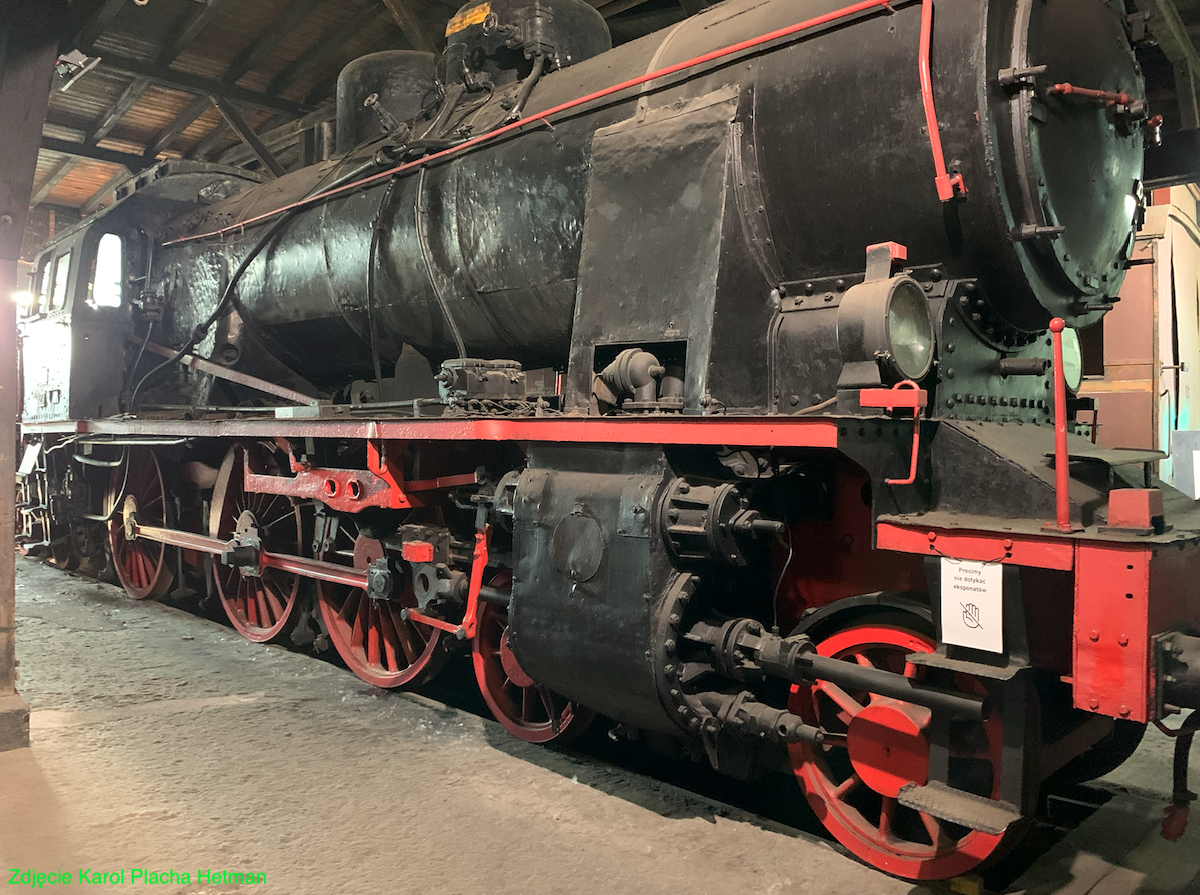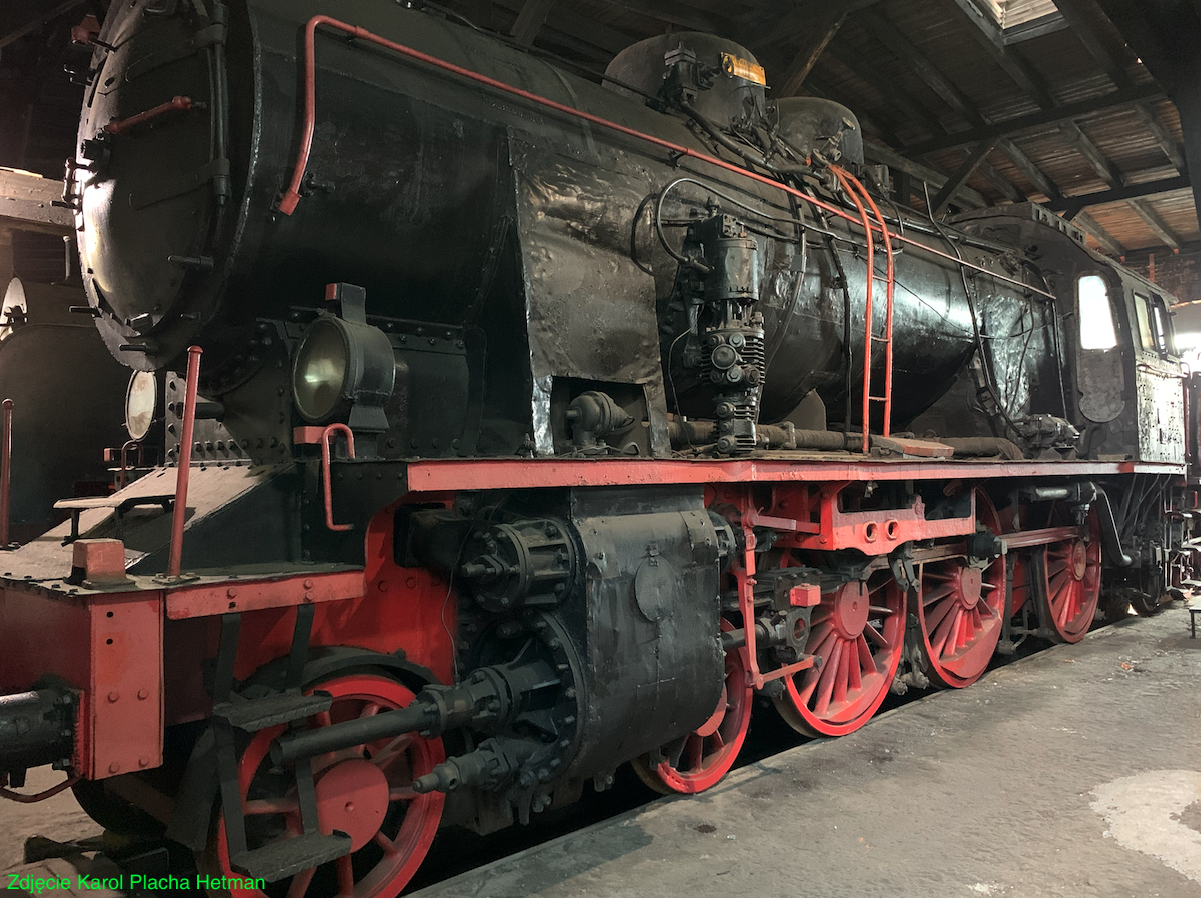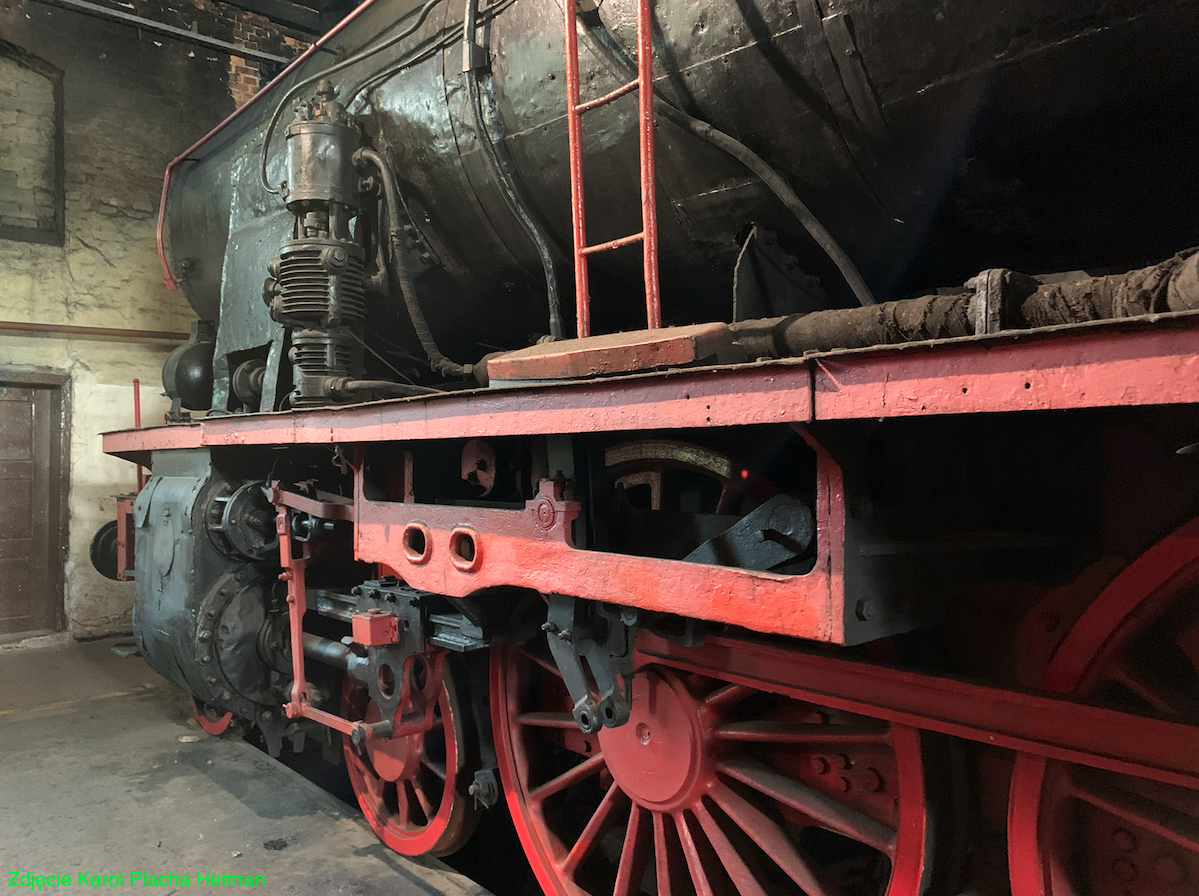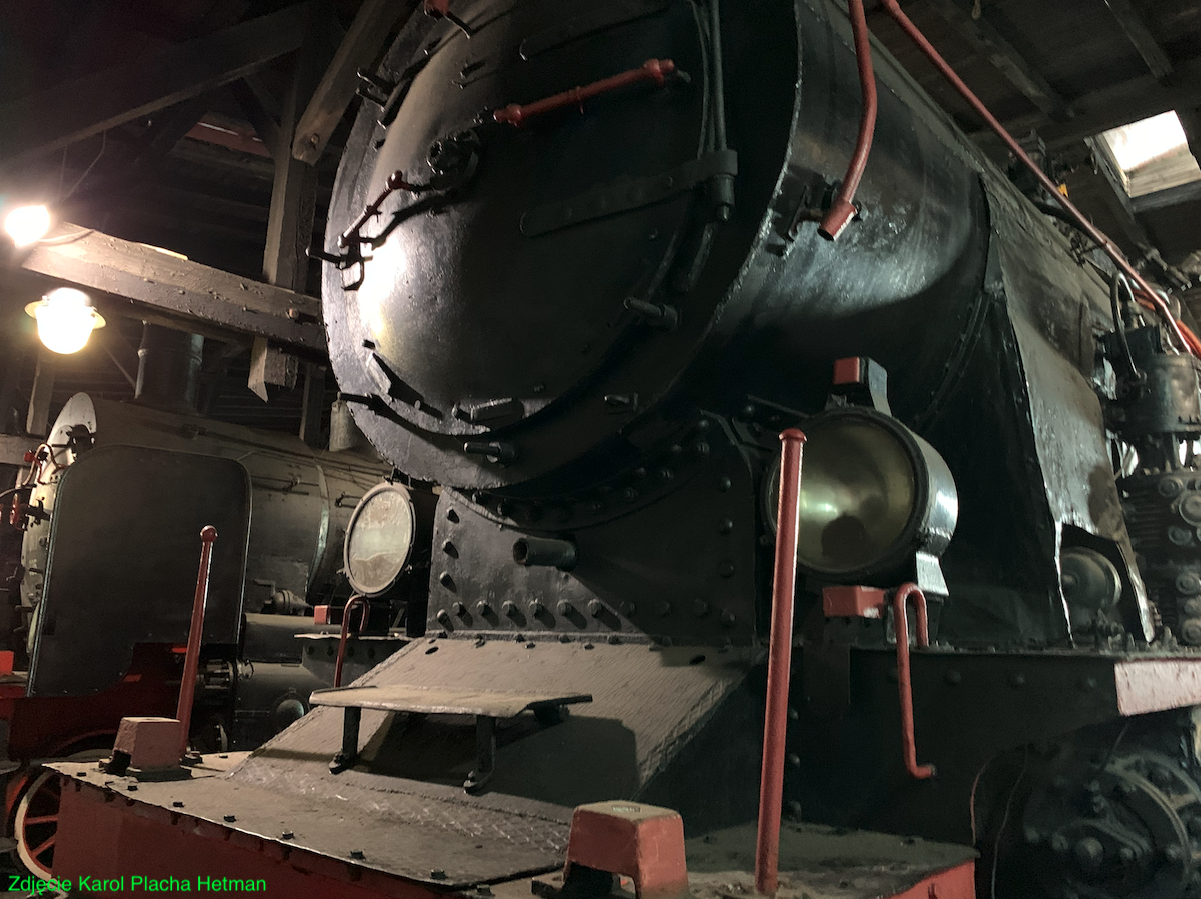Jaworzyna Śląska 2023-08-17
Ok22 steam locomotive.
The Ok22 Steam Locomotive is the first Polish locomotive developed by Polish engineers after Poland regained its independence. The symbol Ok means a steam locomotive designed for passenger trains, with an axle arrangement of 2'C (2-3-0).




The Ok22 steam locomotive was developed in 1922. The Polish engineers were supported by the construction office of the German Hanomag plant. Since the new locomotive was the first one developed in Poland, it was decided to use the design of the Ok1 locomotive (Prussian P8), which was operated in Poland. A type 2'C running system was used, which was very effective; two-axle guide bogie and three driving axles. A completely different, larger boiler has a much larger heating surface, although with the same pressure of 12 at. The hearth has a much larger grate, which allowed for the combustion of inferior coal. The operation of the boiler was convenient and easy.
The first 5 Ok22 locomotives were numbered Ok22-1 to Ok22-5 and were built in the German Hanomag factory in 1923. The locomotives were tested. Structural improvements were made under the supervision of Professor Albert Czeczott. In 1928, serial production of Ok22 locomotives was started in Chrzanów at FABLOK. The boilers for the locomotives were built by Fitzner and Gamper from Sosnowiec. Another 185 locomotives were produced in Poland, numbered from Ok22-6 to Ok22-190. The last example was built in 1934.
In 1952, a boiler from the Tr203 locomotive was installed on the Ok22 locomotive. The Tr201 and Tr203 steam locomotives were former American locomotives, sent to Europe during the Second World War. After the war, the locomotives were donated to some countries in Europe with UNRRA assistance, including Poland. Two Ok22 locomotives with other boilers were built, which were designated Ok55-1 and Ok55-2. The tests were not completed because the program was cancelled.
Ok1 and Ok22 locomotives were used in parallel in Poland. These were the primary locomotives for passenger trains, as the designation suggests, but in the absence of other locomotives, they were also used for hauling fast and light freight trains. The locomotives were distributed to all regional directorates of PKP.
During the Second World War, the Germans took over 111 Ok22 locomotives, which were given the series numbers 38 4501 - 38 4611. Another 79 Ok22 locomotives were taken over by the Soviets. When the brothers jumped at each other's throats (Germans - Muscovites), another 18 copies of the Ok22 were taken over by the Germans and gave them numbers 38 4612 - 38 4629. After a few months, the Soviets began to take over the Ok22 locomotives again. The Soviets adapted the locomotives to the wide track. After the war, CCCP did not return all Ok22 locomotives to Poland and operated about 60 locomotives for many years.
After 1945, there were only 59 Ok22 locomotives in PKP, a dozen of which were out of order. In 1948, 4 Ok22 locomotives were returned to Czechoslovakia, 2 locomotives were returned to Austria. In 1955, 30 Ok22 locomotives were returned to the GDR, but the machines had to be scrapped because they were completely worn out. In 1950, Ok22 locomotives received new numbers from Ok22-1 to Ok22-57 at PKP. The last locomotives ended regular service in 1979. To date (2023), the locomotives have been preserved; Jaworzyna Slaska Ok22-23, Wolsztyn Ok22-31.
T-T data of the Ok22 steam locomotive:
Axis system 2'C (2-3-0) (ooOOO). Curb weight 70,750 kg. Service weight 78,900 kg. Twin engines. Power 980 hp. Heusinger timing type. The diameter of the driving wheels is 1.75 m. The diameter of the wheels of the front trolley is 1.00 m. The boiler has a heating area of 182.10 square meters. Superheater area 61.60 square meters. Grate area 4.01 square meters. Maximum axle load 17,000 kg. Design speed 100 km/h. Length 11.42 m. Length with tender 22D23 is 18.940 m. Wheelbase: 2.20 - 1.57 - 1.58 - 2.70 m.
Written by Karol Placha Hetman
